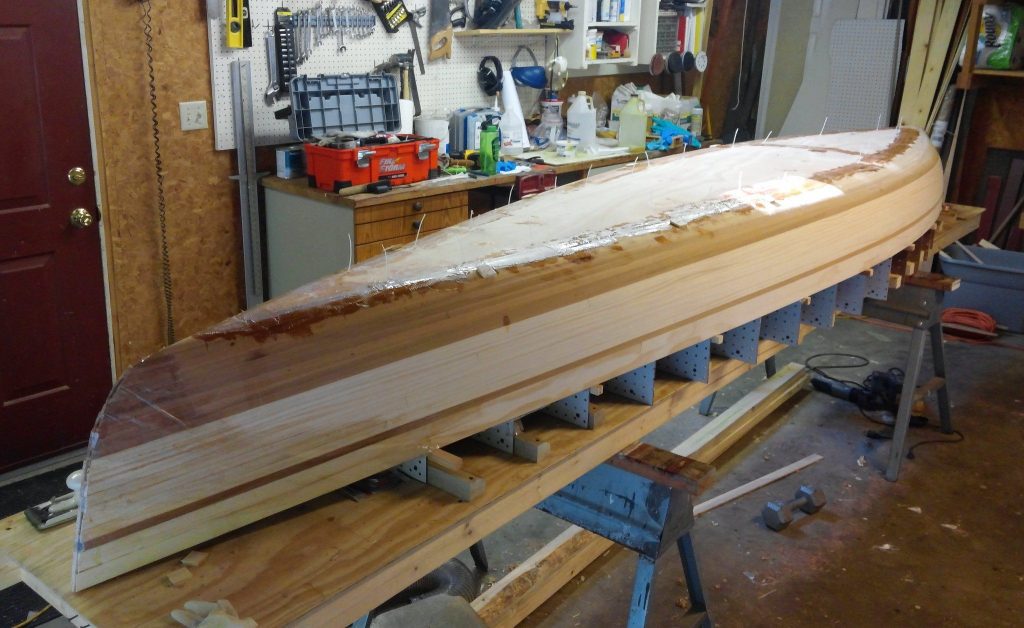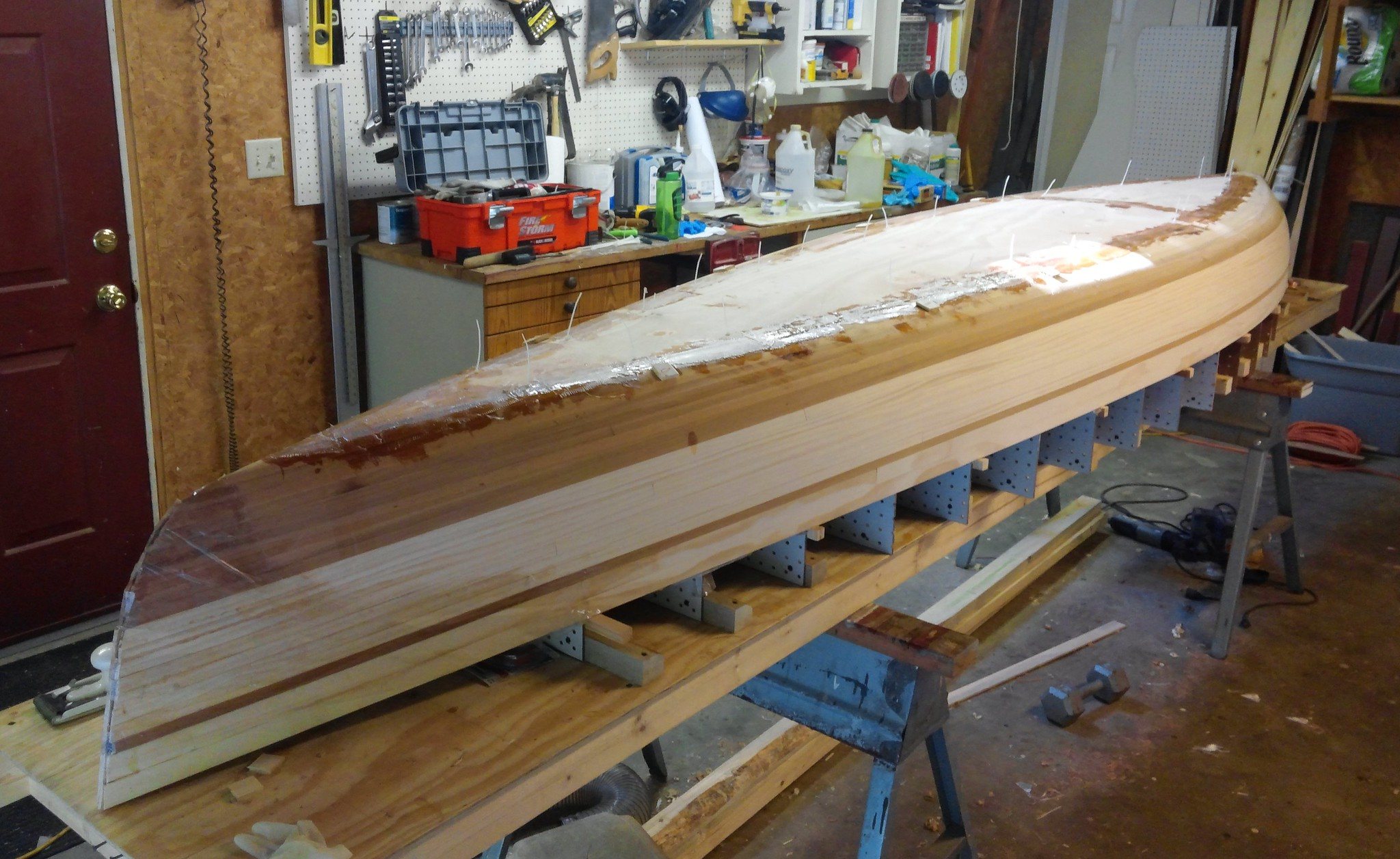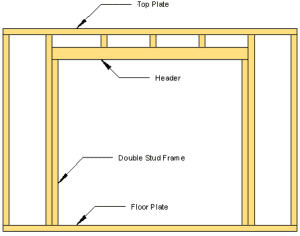When most people think of canoes, they associate them with the American Indian. We don’t know how long the Indians used canoes to travel the waterways, as they didn’t have a written language or keep a written history of their people. But those native people were not the only ones to use canoes. Indigenous people around the world developed their own versions of the canoe, including some which were taken out onto the ocean. Those often had outriggers to help them maintain stability.
The canoe is an almost perfect boat. When European explorers came to the New World, they couldn’t find any way of improving upon the original design. While their ability to create larger craft far outpaced that of the Native Americans, their small craft were not as efficient. The longboats that the Europeans carried on their ships may have been good for pulling their ships away from a dock and were good for making landfall on the beach, but they were nowhere near as good a boat for plying the inland waters as the canoe.
This inability to improve upon the design of the canoe is clearly shown by the quick adoption of the canoe by white settlers, and especially by fur traders, who used the canoe for inland water transportation. Until the task was taken over by larger craft, the canoe was used as the main watercraft for the transport of cargo on the rivers. Even then, the canoe was able to transit narrower, shallower water, which larger craft couldn’t be used on.
The canoes built by the American Indians fell into two basic categories; dugout and birch bark. In the northeast and upper Midwest, where the Birch tree was common, canoes were made of birch bark. The birch tree is unique, in that the bark can be peeled off the tree, without killing it, as long as a narrow strip of bark is left intact. The bark will grow back. However, it cannot be peeled a second time.
Once the larger birch trees preferred for making birch bark canoes became scarcer, innovative builders developed a means for building canoes out of strips of birch bark, building them over a mold, rather than the original design, which was made from one solid strip of bark.
Dugout canoes, on the other hand, were literally cut out of a log, using fire and tools to hollow it out and taper the ends down to a point. Once carved out, hot water was poured into it, making the wood flexible and allowing the basic shape to be spread out for more stability. This made a sturdier canoe than birch bark, although it was considerably heavier.
In the late 1800s wood canoes gave way to canvas, stretched over wood. But this design was also replaced after World War II, with canoes being made of aluminum. Some manufacturers still make aluminum canoes today, although most are either fiberglass or blow molded plastic, which makes for a light, but strong craft.
Throughout all this, the basic design for the canoe hasn’t changed much. You can still find craftsmen who make canoes out of laminated wood strips. Set alongside the newer materials, the only real difference is the material; the overall shape and configuration of the canoe is basically the same. However, the price is considerably different.
Why Build Canoes out of Plywood?
Traditional boat building, as opposed to canoe building, is planks bent over a wood frame. This method can be used for building canoes as well, but it requires quite a degree of skill and is extremely time-consuming. Each plank has to be individually curved to join up with the adjacent ones, in order to avoid any sort of gap between the boards.
Building a canoe out of plywood, on the other hand, allows for minimal shaping of each board. While the canoe’s hull will have a more squared-off, segmented appearance, caused by it being made of essentially three flat panels, it will still have a graceful shape, which will slice through the water nicely.
Plywood canoes have been built in a variety of ways, some using the plywood as if it were boards, and creating a rounded semi-circle out of them. But the simplest way of building a plywood canoe is to build a pirogue canoe (flat-bottomed canoe). This can be made out of three sheets of plywood, creating a canoe that is 15 to 16 feet long.
It is a good idea to buy a pattern for making the canoe; there are even a few free ones, available online. That won’t be a full-sized pattern, but rather a series of drawing that show how to lay out the canoe, so that the side panels and bottom piece can be cut out. It is possible to develop the same dimensions from a cardboard scale model; but there will be fewer mistakes, saving time and money, by starting out with someone else’s dimensions.
Only use marine grade plywood for the canoe, preferably marine grade plywood that is rated WBP. The WBP rating means that the adhesive used in making the plywood has been tested in boiling water, to prove that it can withstand moisture, without delamination. Marine grade plywood is made without any voids, meaning that there will be a smooth surface finish, as well as no voids in the core veneers.
Stitch and Glue Building
Plywood canoes are built using a method called “stitch and glue building,” which is pretty much only used in plywood boat building. The general idea is that the pieces are “stitched” together to hold them in alignment while gluing, rather than clamping. Because any boat hull is a series of curves, it is all but impossible to clamp it together by normal woodworking techniques, without the use of jigs.
As part of this process, many woodworkers tape the edges together first with duct tape, on the outside, allowing them to align the edges. That way, they can have the wood panels held in place while drilling the holes for stitching the pieces together. The duct tape is removed after the inside of the canoe is glued and before the outside is.
To accomplish stitch and glue building, a series of small hole are drilled near the edge of each of the pieces being attached together (usually about 3/8” from the edge) and soft wire is run through these holes to “stitch” the pieces together, in alignment. Some people substitute plastic wire ties for the wire; but wire can be tightened up further and will hold stronger than the wire ties.
In practice, it’s best to loosely attach all the wires first, so as to make sure that they can all go through and that all the edges are aligned properly. Then the wires can be tightened, securing the panels together.
The actual attachment or “glue” part of the process is done with epoxy and fiberglass cloth. It is best to use a heavy-bodied epoxy, but one which has a longer working time than five minutes. Something with a pot life of 30 to 60 minutes is usually ideal. As an alternative, a mix of epoxy and wood flour can be used on the inside of the boat, rather than fiberglass cloth.
If the epoxy and wood flour mix is going to be used, mix it to a consistency of peanut butter, and then spread it on the inside of the joint, spreading it in to make a radius with a finger or a round tool. Allow it to cure and harden at least overnight, before removing the duct tape and gluing on the outside. It will be necessary to flip the canoe over, carefully, which should not be done until the epoxy has set.
The outside of all the seams is glued by painting on a strip of epoxy along both sides of the joint, and then laying fiberglass cloth into the wet epoxy. The epoxy should soak into the cloth fairly quickly, but it may be necessary to dab a few spots with the brush, especially if they are sticking up from the surface of the wood. Once the epoxy has become tacky, mix up another batch and paint over the fiberglass cloth a second time, in order to ensure that it is sealed. Allow to set before sanding.
Once the epoxy has had sufficient time to set, the wires or wire ties can be cut and removed. The resulting hole will need to be filled at some point in time, usually after some sanding has been completed, but before the final sanding.
Please note that because epoxy is being used in part of the construction, it is best to use it throughout. While there are parts of the canoe which could be glued with normal wood glue, the wood glue will not bond well with the epoxy. Using epoxy throughout ensures that all joints are well bonded.
Building the Canoe
A Plywood canoe is built from three sheets of marine-grade plywood. Fairly thin plywood is used for flexibility. Typically, 4mm thick plywood is used for the sides and 6mm thick for the bottom. Some clear dimensional lumber will be needed as well, for making the gunwales, spreader and bracing. The entire thing is held together with epoxy.
Making the Three Major Pieces
Each of the sides, as well as the bottom, is made of two pieces, usually cut from the same sheet of plywood, which gives us a maximum possible length of 16 feet. So the first step is to lay out the various major pieces and cut them out. The pattern will give dimensions for a grid of points to be laid out on the sheets. Lay these out, then pound brads into the surface of the wood. These will serve to hold a flexible strip of wood, so that the actual line can be drawn.
Before cutting, use a utility or craft knife to score through the face veneer of the wood, to help reduce splintering. It’s a good idea to cut the pieces slightly oversized (1/16”) and then sand the edges down to the line. This will help ensure that the edge comes out exactly where it should, and will not be disturbed by splintering and dips where the saw didn’t go where it should have.
Each pair of parts will need to be butt-joined together to make them into full-length parts. This is accomplished by gluing a piece of wood cut to overlap the joint. It should be at least six inches wide, allowing it to overlap 3” on each side of the seam; but do not make this piece run the full width of the panels being connected together. There is need for space at what will be the top for the gunwales, and at the bottom for the joints.
The butt joint should be glued together with a heavy-bodied epoxy. One with a rapid cure time will work well adding some sort of fibrous material, such as cotton fiber, to thicken the epoxy and turn it into a putty-like consistency. This gives the epoxy greater structural stability. Clamp the butt joint by placing weights on it until the adhesive cures. Some of the epoxy will bleed down in-between the boards, bonding those edges together as well.
Connecting the Canoe’s Skin Together
With the three main pieces prepared, it’s time to attach the two sides of the canoe together, stitching and gluing the ends. Temporary spreaders are then installed, opening the sides up so that the bottom of the canoe can be put in place. This is then attached to the sides, using the stitch and glue method mentioned above.
It is also useful to cut “stems” out of dimensional lumber and install them, once the stitching has been removed. These are narrow, angled pieces, which go all the way into the point of the bow and stern, providing a larger glue surface between the sides. Make the stems by measuring the angle between the sides and then cutting half that angle into each side of a piece of knothole free 2”x 4”. Leave the piece too long and then glue it into the prow and stern, clamping it while the epoxy cures. Once it is cured, the pieces can be cut off flush with the top of the hull.
Stainless steel bolts can also be run through the sides, at the prow and stern, into these stems, giving the canoe additional strength. That may not be necessary under normal operations, but could be very helpful if the canoe runs into anything, preventing the shock from causing the wood to separate.
At this point, the basic canoe shape has been created. But the work is far from over. Using the canoe as it is would be disastrous, as it is not structurally sturdy. Besides, the wood is unfinished, allowing it to absorb moist and rot.

Adding the Gunwales
The next important part is to install the gunwales. These are created in two parts, an inwale and an outwale. Yes, those are just what they sound like. Cut strips of knot-free wood and then lap joint them together, if necessary, making them 16’ long. Before installing them, put a curve into the wood pieces by soaking them with water and suspending them at both ends, with some weight pulling down on the middle (we’re talking a total of four pieces of wood here). The curvature doesn’t have to be exact. Getting it close is close enough.
This leads to the trickiest part of the project and the one which requires the most clamp. Both the inhale and outhale are glued to the canoe’s sides at the same time, needing to be clamped in place while the epoxy cures. Depending on how many clamps are available, it may be necessary to do this one side at a time.
With the gunwales in place and cured, there will probably be the need to do some trimming and sanding to make the top edge flush and smooth. Trim off any extra material at the ends and then use a plane and a sander to shape the top edge of the gunwale. If so desired, round over the top edges with a router.
Other Structural Elements
Keels on boats perform a number of different tasks, including acting as the backbone of the structure, to which all the rest of the boats “ribs” are attached. On sailing ships, the keep and centerboard are often integral with each other as well. But on a canoe, the major purpose of the keel is to protect the bottom of the boat from damage. Having a keel protruding below the canoe’s bottom allows the keel to hit rocks first, when coming ashore, holding the bottom up off them and preventing damage to the bottom.
Whatever plans used will probably have specific dimensions for the keel, but it will basically be a strip of wood. Some plans call for cutting the upper side of the keep to match the curvature of the canoe’s bottom, rather than leaving it the same thickness as the full length of the canoe. This provides for a higher keel at the bow and stern, where it is most needed. If that is the case, then it’s a good idea to cut the bottom “corners” of the keel, rounding them, once it is installed.
The keel itself is installed by screwing through from the inside of the canoe, into the keel, along with gluing it. The use of screws is mostly due to the need for clamping, as there is no other practical way of clamping on the keel while the adhesive is curing. The screws can be removed, once the adhesive has cured, and the hole plugged with matchsticks. If they are going to be left in place, stainless steel screws should be used.
Some sort of permanent spreaders will need to be installed between the sides, up near the gunwales, to prevent the sides from collapsing in, especially if the canoe side hits something. At a minimum, one spreader will be used, at the middle of the canoe. Dimensions for these will be included in the plans.
Finally, canoes have a small deck area at the bow and stern. These can be made from scraps leftover from the plywood, using the canoe itself as a template for their shape. Typically, these sit on top of the gunwales, although they can be inset, so as to be flush with the top of the gunwales. In either case, it’s a good idea to put a supporting brace under the edge of the deck, as people tend to grab that in order to lift the boat. Make sure to attach the deck securely, so that it doesn’t break loose from people lifting.
Finally, the last part to be installed is the seats. It can be helpful to make some temporary seats out of scrap and set them in place to try out the spacing and make sure that they are right where needed. This doesn’t necessarily mean taking the canoe down to the lake to try it out. Just set it on the lawn and get in it, testing out how the spacing works out for paddling and any cargo that might be carried along. The neighbors might get a funny picture of the new canoe owner paddling in their front yard, but it could save heartache later.
Finishing the Canoe
Coating the entire canoe, inside and out, with three coats of epoxy resin is a great way to waterproof it. However, the epoxy may not be UV stabilized, so it’s a good idea to either paint or varnish over the epoxy, providing that UV seal. It is even possible to paint the outside and varnish the inside, leaving that more natural looking.




